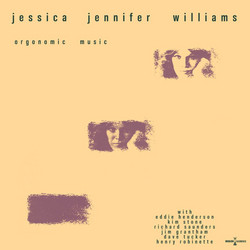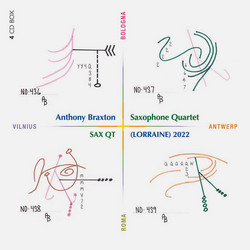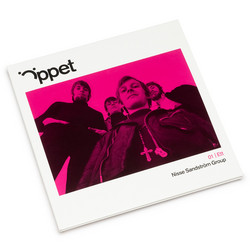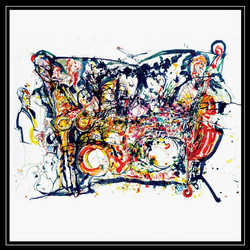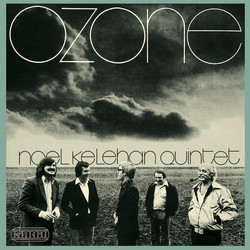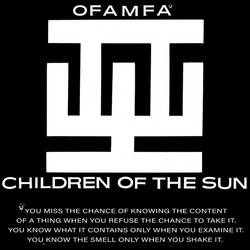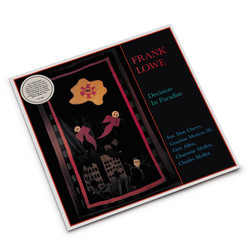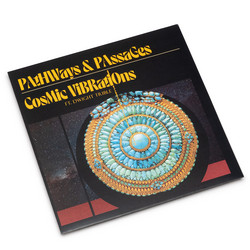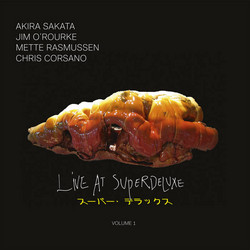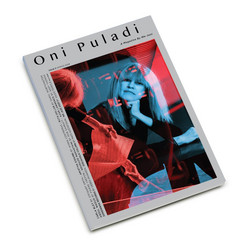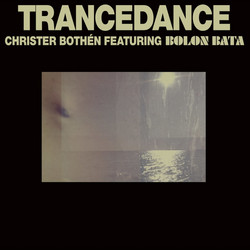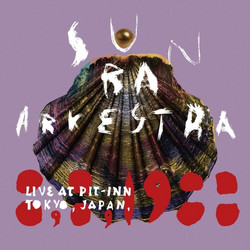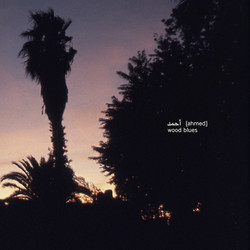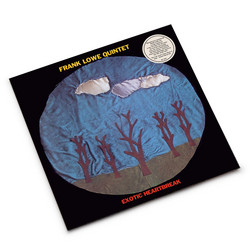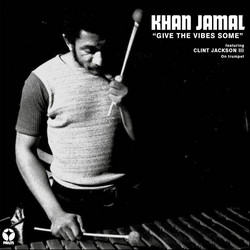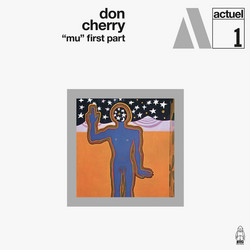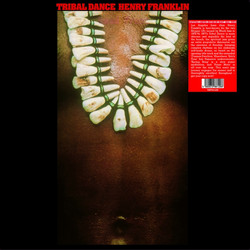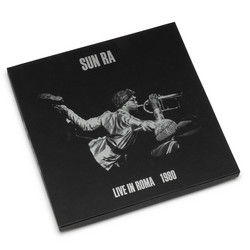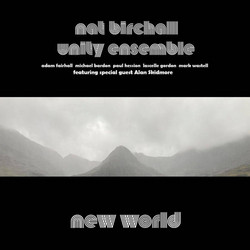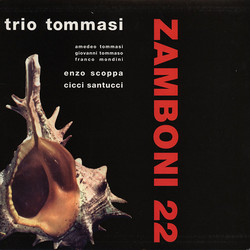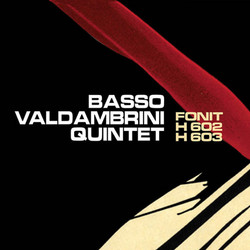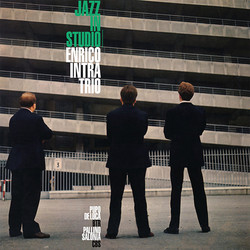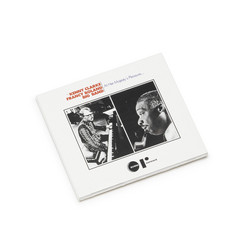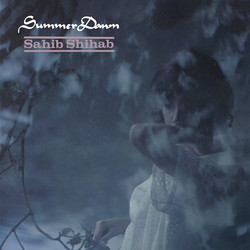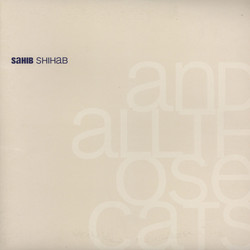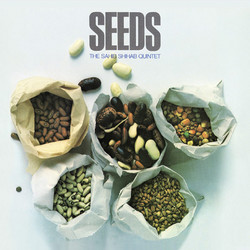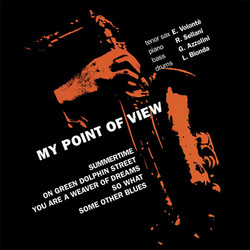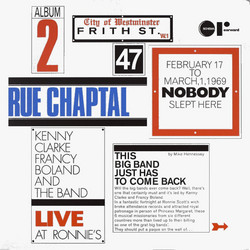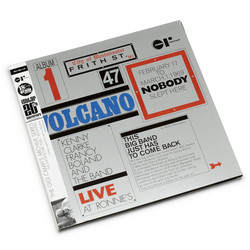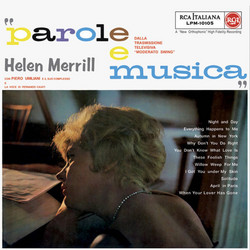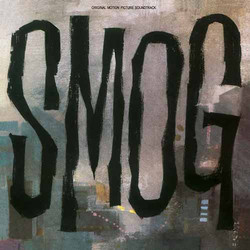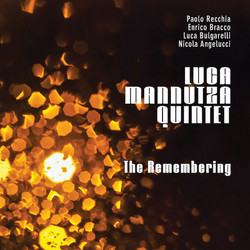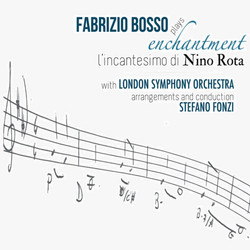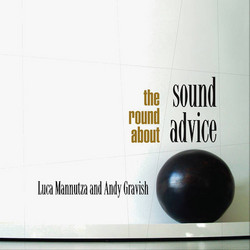Trio Tommasi
Zamboni 22 (Lp)
Climate- atmosphere is what we say. Soul with beautiful expression, is what they say in the modern jazz scene in the US. It’s a necessary component for good jazz, as well as for swing. But to achieve an organic atmosphere which is therefore vital and alive, a relationship of intentions and views, and a congeniality of thoughts are needed. When Tommasi was in Rome for a few days and had Santucci and Scoppa listen to the latest pieces he had composed, the three musicians ideas, aspirations, and agreement in taste appeared to exist right off the bat, and the idea to do an album together was born almost instantly. Now, with all things said and done, a certain climate seems to have been achieved, with no lack of a swing enriched with heat and energy. The two horn players, who up until now have played and recorded with a band from Rome, the Modern Jazz gang, have really and fully understood the spirit of the pieces written by Tommasi, and even if it’s the first time they have met with the trio of the pianist from Trieste, they demonstrate that they have merged and combined into one, more than anyone had hoped for. The album was recorded by forging ahead and overcoming various obstacles like that of a geographical distance that they were not used to( the horn players reside in Rome, and the others in Turin, Bologna, and Lucca); but now that the project has been achieved rehashing the difficulties that they had to get past in order to finish the piece is no longer important (and nor is it well wished for).
Amedeo Tommasi, piano player, was born in Trieste on December 1, 1935. After studying the piano privately under the guidance of classical maestros, he felt the fascination of modern jazz and so he dedicated himself to it with serious and intense passion. Having moved to Bologna where he still resides today, he soon matured his jazz in a hot and lively atmosphere of few amateurs who usually get together in a strange yet very well supplied record shop called the “Disclub”, whose preferences range from the trendy Bop by Bird and Diz up to the last experiences of Coltrane and his companions. Having a very close relationship with this sort of climate, Tommasi finds, with his profound reasons, his way of playing, and above all, writing, which in this album are an exhibition of his personal character, as the author of intense, dramatic, and original compositions, even if they require a noteworthy commitment from the soloists for the intrinsic harmonic and rhythmical difficulties. Tommasi’s trio, came to light after the radio transmission “La Coppa del Jazz” (The Jazz Cup). In this album the trio represents itself in its best form with Tommaso and Mondini, and it is very appreciated in Italy both as an independent band and as a rhythm section (compare the recent albums recorded with the Belgian alto-sax player Jaques Pelzer and with those of Conte Candoli).
Giovanni Tommaso, bass player, was born in Lucca in 1941, and is therefore the youngest and possibly the most talented out of these soloists. After having studied the piano and bass for a few years, he ended up dedicating himself to the bass, and developing his particular jazz qualities which have helped him in already being one of the best bass players in Italy. Besides being a part of the Tommasi Trio, he is the bass player for “Quintetto di Lucca” (the Lucca Quintet), a refined group of young musicians, with whom he has recently been to the US, where he was able to observe the jazz scene up close and to noticeably improve his technique and musical knowledge.
Franco Mondini, drummer, was born in Turin on September 14th, 1935. Despite his young age, he has already been validly included amongst the top Italian musicians for years. After having graduating in theory and solfeggio, he met Kenny Clarke in Paris who decisively impressed him and gave him precious advice. In Holland he studied quite a long time with Johnny Engels jr., one of the best European drummers. He has played with the best Italian musicians (he played with Nunzio Rotondo for one year) and foreign musicians (Phil Woods and Phineas Newborn appreciated him quite a bit).
Francesco “Cicci” Santucci, trumpet player, was born in Rome on April 21st, 1939. At the age of 17 he performed in a Jazz Festival in Rome, but his first experiences of any real importance were had a year later in the Modern Jazz Gang Quintet; a Roman octet which he is still a member of. He is forming a serious musical preparation with his trumpet studies and composition under the guidance of private maestros. In an opinion survey recently done by the readers of the magazine “Jazz di ieri e di oggi” (yesterday’s and today’s Jazz) he resulted fourth among the Italian trumpet players.
Enzo Scoppa, tenor sax player, was born in Rome in 1934. He is also part of the Modern Jazz Gang Quintet. He has done concerts and albums with Rotondo. He was classified as third in the same survey, and is one of the few Italian tenor players who follow the most recent trends and try to create a characteristic voice with their own instruments.
This volume is entitled after “Zamboni 22” not because this piece is retained to be the best or the most important, but for one reason, emotional so to say, which is because it was the first piece that Tommasi proposed to Santucci and Scoppa. Therefore it is the matrix of origin of the same album, even if on this occasion it was preferred to utilise the performance of the song done only by the trio.
The four pieces performed by the quintet are marked with an asterisk. The other two are played by the trio. The album opens with Mulatto, inspired by the homonymous drama of Langston Hughes, especially the last part: the black man hunted down by the white men thirsting for vengeance. It is about a composition made up of 12 bars, which goes beyond any descriptive expectation, demonstrated first by the rhythm and then by the horns, which accentuate the dramatic charge and sharp colours. The atmosphere briskly widens into a series of arpeggios of a restless romanticism that has gone awry, which the trumpet and tenor solos follow with the tenor solo being particularly complex. After a nice piano solo, bass solo, and a chase by the base and drums, the composition finishes ex abrupto with a flared horn finale.
Zamboni 22 in trio, consists of two parts of 20 and 16 bars respectively, with a very complex harmonic round, hidden by the apparent simplicity of the melody.
Ballata in forma di Blues (Blues style Ballad), as the title indicates, is a composition of 24 bars, and is therefore a blues doubled in D major with some harmonic alterations. The piano solo is the first to express this sort of blues, then in comes the trio, and finally the muted trumpet takes over with one of its best solos, which the sax and piano follow, finishing off with a composition by the trio. This piece somewhat represents the spirit of the encounter between the two Romans and the Tommasi trio because the trio usually plays the piece in which the horns have their solos.
Ballad for Micheline is dedicated to Jaques Pelzer’s little daughter for the friendship that links Tommasi and Pelzer. It is a slow and lyrical composition in E major in two parts of 8 and 12 bars respectively. The horns perform this piece alternating between one another. The solos then take over starting with Scoppa, then Santucci with a muted trumpet, and then Tommasi.
Autostrada del sole ( the sun motorway) is Tommasi’s most recent composition dedicated to the important public work which is currently in progress in Italy. It is a very original composition in C, with an AABA’A pattern, where the first two A’s are each 8 bars, then B is 16 bars in A minor and in ¾ tempo, then A’ is 8 bars in D and 4/4, then A again in C. The piece gives a brilliant sample of the trio’s qualities.
Coltrane, in homage to the saxophonist who our five musicians unanimously retain to be the most important personality in today’s jazz, is a composition of 12 bars in D minor, whose reasons for interest consist of the rhythmic division where the accents are always off beat in a such a way to violently contrast the high notes played by the horns (a close-up effect of tension) and the low notes played by the piano and bass in unison (a dark and dramatic back ground effect) , in a suggestion of triple tempo, while it’s actually in 4/4. After the composition there is a nice solo by Tommaso on the bass, then, with a Cuban background, Scoppa, Santucci, and Tommasi all improvise with Mondini at the end who does a great solo that’s full of energy. - Umberto Santucci
